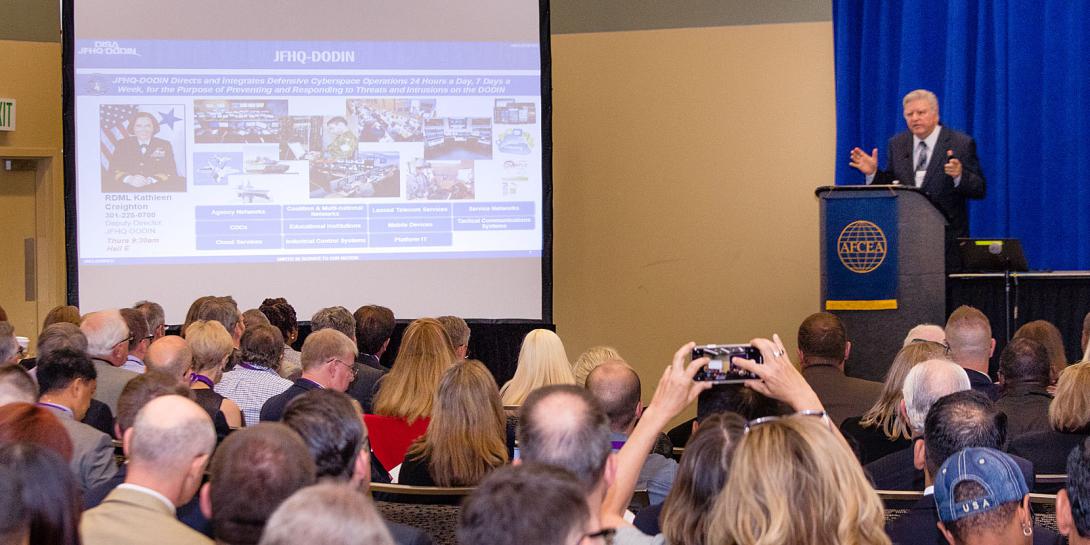Alternative Acquisition Approach Offers Promise
Small businesses often lead the pack in innovation and agility, but cumbersome acquisition processes can stall the way forward when working with government agencies. The Defense Information Systems Agency (DISA) hopes to grease the skids between ingenuity and warfighters by offering a streamlined method for carrying out prototype projects and transitioning successes into follow-on production.
The Other Transaction Authority (OTA) methodology offers an alternative to the traditional rules outlined in the Federal Acquisition Regulation (FAR) process. Congress officially implemented the OTA in 1994 as part of the National Defense Authorization Act. In the National Defense Authorization Act for Fiscal Year 2018, Congress doubled the dollar thresholds of OTAs that required approvals. In addition, the definition of prototype was broadened to include an analysis, process improvement, hardware and software.
Scott Stewart, technical director, Procurement Services Directorate, DISA, understands that today's innovators in revolutionary and disruptive technologies come from a sector of the economy that faces fewer restrictions in procurement regulations than those the federal government poses. As a result, DISA executes and enters into OTA agreements to leverage leading-edge technologies, while appreciating and accommodating the limitations of these market leaders, he explains.
OTAs offer a streamlined method for carrying out prototype projects and transitioning successes into follow-on production. A prototype project must be directly relevant to enhancing the mission effectiveness of military personnel and the supporting platforms, systems, components or materials DISA may acquire or develop, Stewart explains.
“These prototype projects serve as a preliminary pilot, test, evaluation, demonstration or agile development activity to ‘prove' a technology before entering into a full-scale development effort,” he adds. A prototype project may involve a proof of concept, a pilot, a novel application of a commercial technology or a combination of all of these.
If the prototyping effort is successful, the agency can then move to the production phase, which may or may not be another OTA or the agency might decide to go with a FAR-based contract, whichever is most appropriate.
OTAs can provide greater flexibility and the opportunity to enter into contractual arrangements that more closely resemble commercial agreements; however, they should not be viewed as a panacea of contract perfection. “Traditional contracting, while often seen as cumbersome, has many built-in features that protect the government's rights. For example, data rights and intellectual property [IP] remain with the government if the developed data or IP was government funded,” Stewart notes. Although the government doesn’t give up its rights under an OTA arrangement, its negotiation teams must conduct more due diligence to ensure the government's rights are protected.
Agencies also may be challenged in using a sole-source OTA for requirements more appropriately procured through FAR-based, competitive procedures, Stewart points out. “For this reason, it is incumbent upon the government to ensure the requirement fits the true definition of a prototype and to prevent use of this authority as a way to circumvent fair market competition,” he states.
DISA has a number of ongoing OTAs for projects such as assured identity, mobile endpoint security and continuous authentication. “While these projects are promising, they remain in the prototype environment. It is too early to tell if they will transition into a production phase,” he shares.
Despite his cautiousness about these projects, Stewart is guardedly optimistic about what OTAs ultimately can bring to warfighting. “Tapping into today's leading technologies will ensure the Department of Defense remains the world's strongest fighting force. However, this technology is advancing so fast that traditional contracting methods cannot always keep pace.
“If the agency is successful in implementing a quick, repeatable process for entering into contractual arrangements with market leaders, then we will be able to leverage that same speed to bring advanced, trusted capabilities to the warfighter,” he states.
OTA will be one of the topics discussed at the AFCEA Small Business Innovation Summit on July 26 in Vienna, Virginia. John Nunziato, vice president, SOSSEC Consortium, and Erik Olbeter, advisory board member, National Security Technology Accelerator, will describe how they are being used to obligate fiscal year 2018 funds by September 30 as well as how companies can position themselves for fiscal year 2019 opportunities.




Comment
I am looking forward to this
I am looking forward to this discussion at the upcoming Summit.
It should be very interesting
It should be very interesting, especially to companies that offer new ways of tackling problems.
Comments